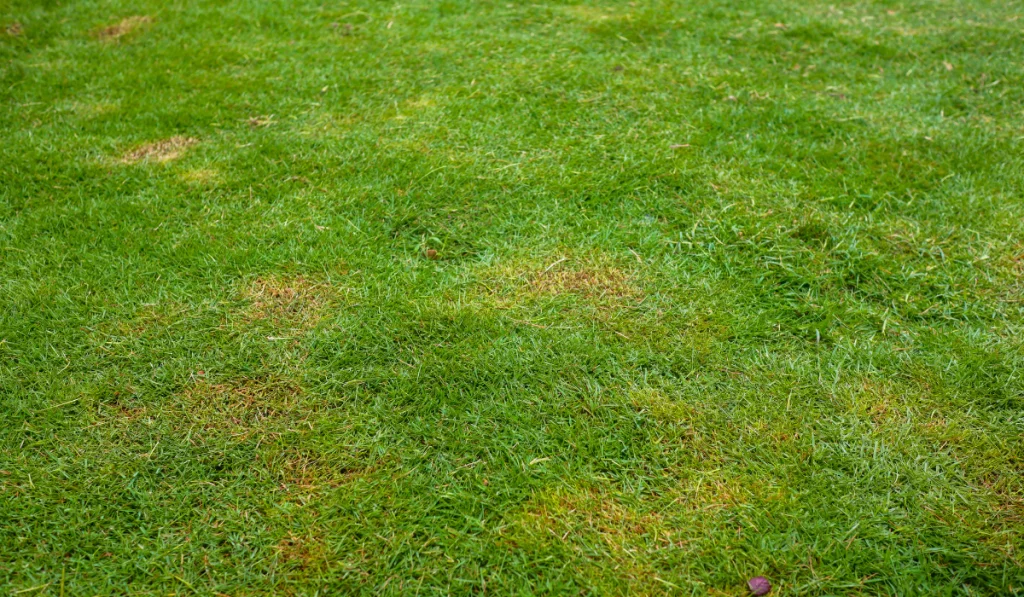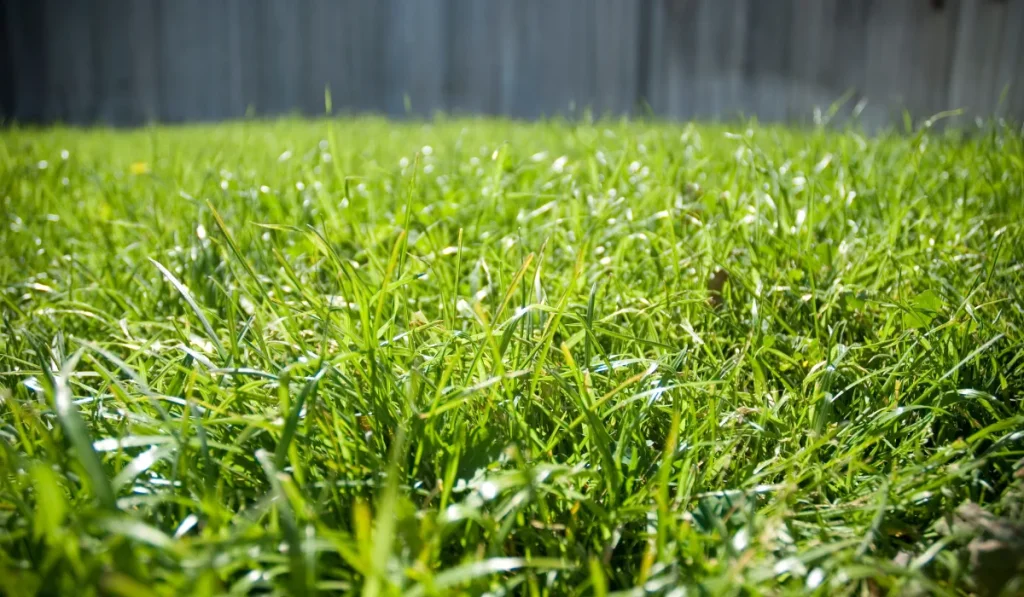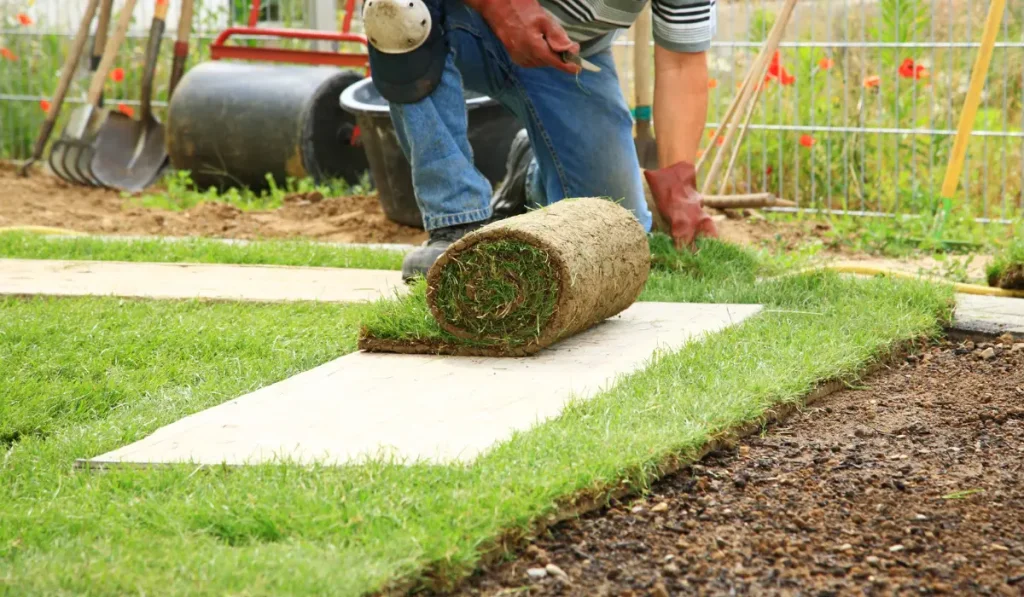Can you tell the difference between Bermuda and Zoysia grass? These two popular lawn choices each offer unique advantages that make them stand out in different environments.
Choosing between these types of grass for your lawn can take time and effort. Read on to find out more about which one is the best fit for your lawn and lifestyle.
Key Takeaways
- Zoysia grass has a thick texture and grows well in different climates with little maintenance.
- Bermuda grass grows quickly, thrives in hot weather, and handles heavy use but needs frequent care.
- Zoysia grass needs less mowing and water, while Bermuda grass grows faster and requires more attention.
- The best grass for your lawn depends on your climate, soil, how much foot traffic it gets, and how you want it to look.
What Is Zoysia Grass?

Zoysia grass stands out with its lush, dense texture and adaptability to various climates. As a warm-season turfgrass, its varieties cater to different preferences in texture and maintenance.
Key Characteristics
Zoysia grass is known for its unique growth habit, forming a thick, carpet-like surface thicker than other warm-season grasses. Cultivar varieties like Palisades Zoysia offer a medium texture, while Empire Zoysia provides a coarse blade. Zeon Zoysia impresses with its fine texture.
These variations allow homeowners to choose the right fit based on shade tolerance, lawn usage, or desired texture.
Ideal Growing Conditions
When deciding if Zoysia grass is the right choice for your lawn, understanding its ideal growing conditions is crucial. Here is the ideal environment for optimal growth and long-term health:
| Growing Conditions | Details |
|---|---|
| Sunlight | Thrives in full sun but can tolerate partial shade |
| Watering | Needs moderate watering to prevent waterlogging |
| Soil Type | Prefers well-draining soil to avoid standing water |
| Temperature | Retains its rich color longer in regions with mild winters |
| pH Level | Prefers a pH range between 6.0 and 6.5 |
Pros and Cons of Zoysia Grass
| Pros | Cons |
|---|---|
| Low maintenance, making it ideal for homeowners who want to spend less time on lawn care. | Requires dethatching every couple of years. |
| Thrives in various climates due to strong drought tolerance. | Grows quickly during the growing season, necessitating frequent mowing. |
| Dense growth pattern contributes to fewer weed problems. | Establishing Zoysia can be slow and costly, especially when starting from seed rather than grass sod. |
| Lush, green appearance that is pleasing and durable underfoot. | Zoysia grass has a longer dormant period than most Bermuda lawns. |
| Zoysia sod can provide an instant thick, uniform look. |
What Is Bermuda Grass?

Bermuda grass is a popular choice for green lawns, especially in southern regions like Texas. Known for its durability, speed, and adaptability, it offers a resilient surface suitable for backyards, sports fields, and high-traffic areas.
Key Characteristics
Bermuda grass is distinguished by its vibrant green color and fine texture. This grass type grows rapidly through stolons and rhizomes, allowing it to establish quickly. It thrives in sunny and dry environments, showcasing strong drought resistance.
Despite its fast growth rate when starting a new lawn, it may need careful maintenance, including regular mowing and fertilization.
Ideal Growing Conditions
When selecting Bermuda sod for your new lawn, it’s important to understand the specific growing conditions that help it thrive. Here are the key factors that contribute to its healthy growth:
| Growing Conditions | Details |
|---|---|
| Sunlight | Thrives in areas with abundant sunlight |
| Watering | Able to survive on less water when needed |
| Soil Type | Performs best in well-drained soils |
| Temperature | Thrives in warm temperatures between 75°F and 95°F |
| pH Level | Prefers a range between 5.8 and 7.0 |
Pros and Cons of Bermuda Grass
| Pros | Cons |
|---|---|
| Renowned for its toughness, making it ideal for sports fields and playgrounds. | Can become invasive due to its aggressive growth habit. |
| Dense growth pattern allows it to withstand heavy foot traffic without significant damage. | Containment is challenging, requiring physical barriers or regular edging to manage its spread. |
| Has a lush green color, enhancing its aesthetic appeal. | In cooler climates, it can lose its vibrant color in winter, turning brown and requiring overseeding in spring. |
| Vibrant appearance makes it a favorite among lawn enthusiasts. | Bermuda requires frequent mowing during the growing season due to quick growth. |
| Perfect for areas with higher temperatures. | Bermuda develops a thick layer of thatch that builds up over time and requires dethatching annually. |
How to Choose the Right Grass for Your Lawn
Selecting the right grass for your lawn isn’t a one-size-fits-all decision. Each grass type comes with its unique characteristics, and the choice depends on factors such as:
- Climate Suitability: Choose a grass type that thrives in your region’s temperature and weather.
- Soil Type: Match the grass to your soil’s characteristics, such as drainage and composition.
- Shade Tolerance: Consider how much sun or shade your lawn receives when selecting grass.
- Foot Traffic and Usage: Pick a grass that can handle the activity level on your lawn.
- Maintenance Needs: Think about how much time and effort you want to invest in lawn care.
- Aesthetic Preferences: Select a grass that fits the look and feel you want for your yard.
Frequently Asked Questions
Does Zoysia grass or Bermuda grass handle shade better?
Zoysia tends to handle shade better than Bermuda. While both grasses prefer the sun, Zoysia’s ability to stay lush in partial shade gives it an edge. Bermuda, on the other hand, thrives in full sunlight and can struggle in shaded areas.
Can Zoysia and Bermuda grass grow together?
Planting Zoysia and Bermuda together can lead to challenges. Zoysia could overtake due to its dense growth pattern, while Bermuda might attempt to spread aggressively. This pair may need extra care to maintain balance and aesthetics in the lawn.



